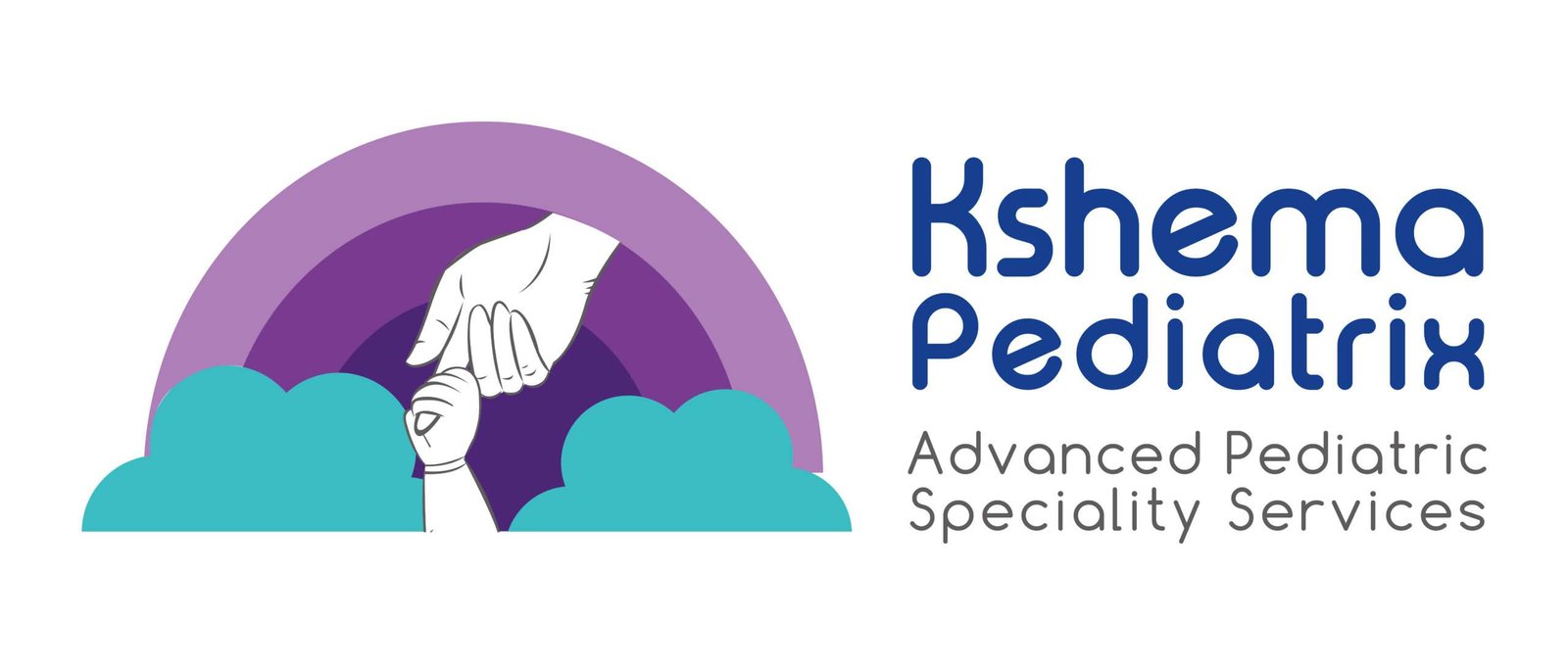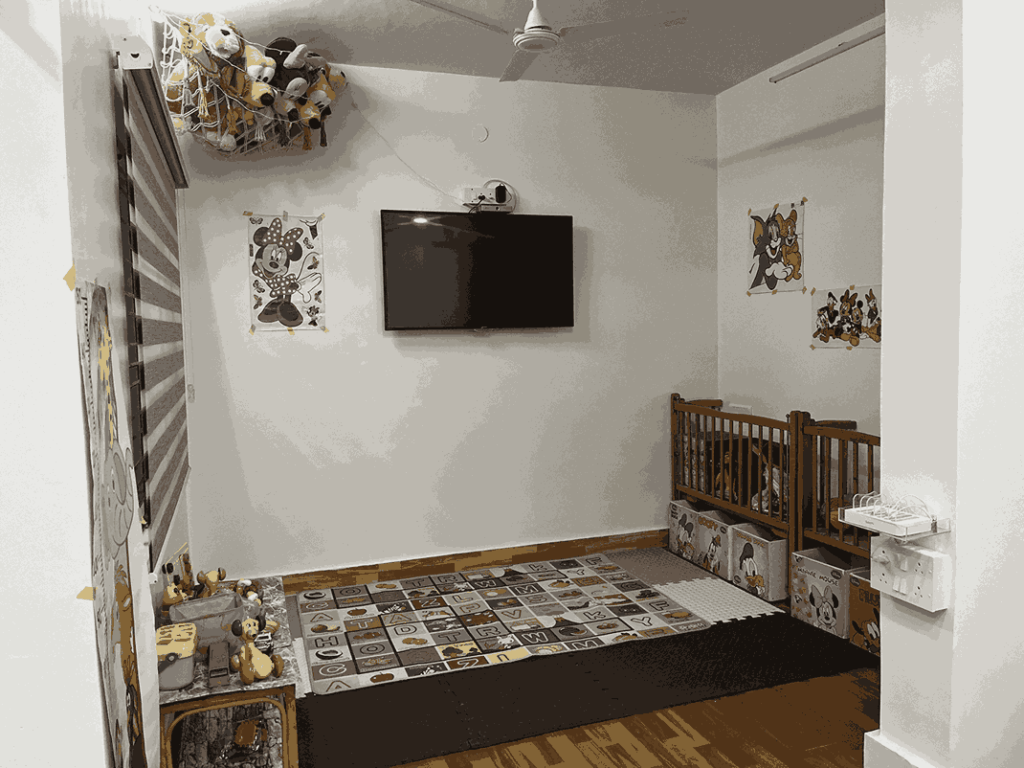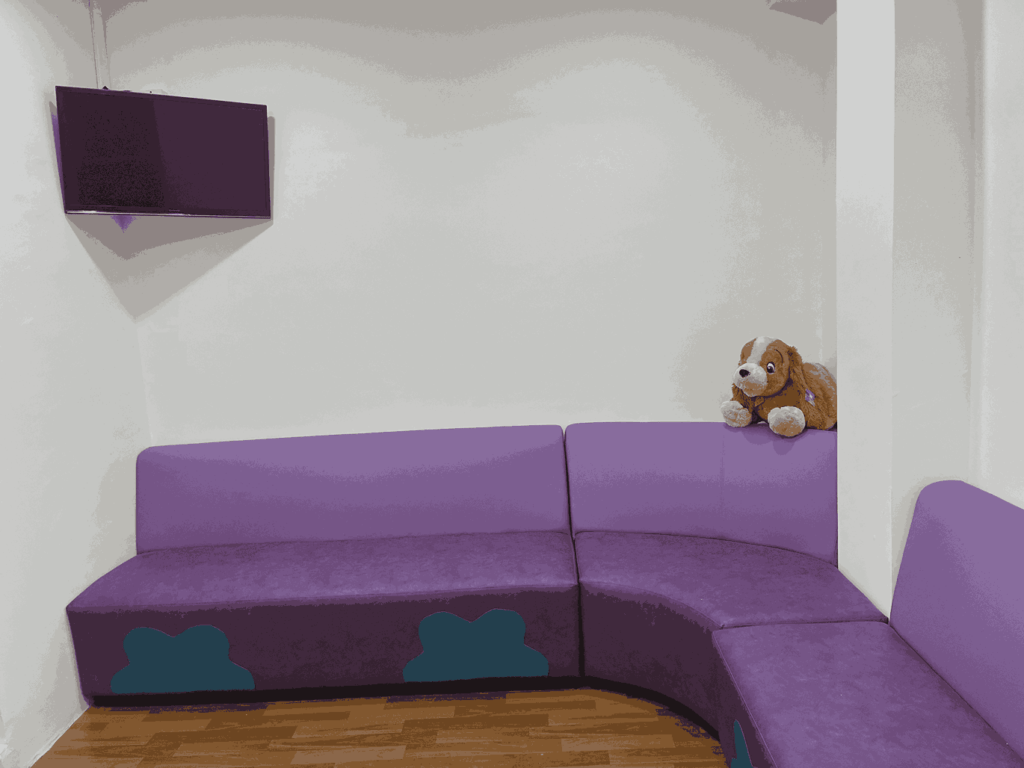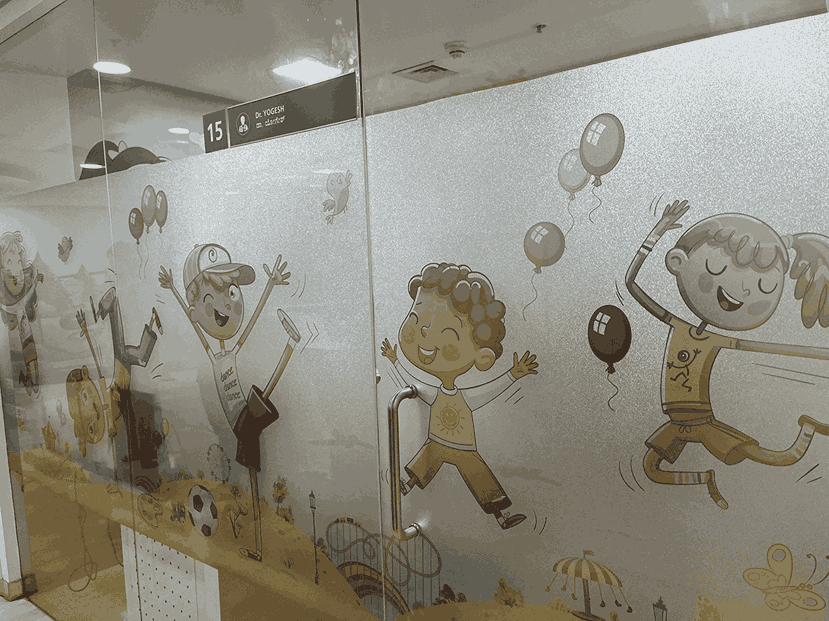
Pediatric Surgical Speciality
30 Years of Clinical Practice
Dr. Ramesh Santhanakrishnan, a senior Pediatric Surgeon with nearly 30 years of clinical practice in Bangalore.
☑️ Specialized Pediatric Care: Focuses on advanced pediatric surgery and medical services.
☑️ Experienced Team: Led by Dr. Ramesh Santhanakrishnan with over 30 years of experience.
☑️ Comprehensive Services: Includes Pediatric Surgery, Urology, Neurology, ENT, Gastroenterology, and more.
☑️ Compassionate Care: Committed to providing ethical, child-friendly treatment.
☑️ Modern Facilities: Equipped with state-of-the-art medical equipment for pediatric needs.
A Sneek Peak into our Clinic




Why Choose Our Pediatric Speciality Services
☑️ Three decade long legacy
☑️ Best-in-class tools and technology to deliver advanced pediatric surgical services
☑️ Brought thousands of children out of Pediatric conditions enabling them to live a happy and healthy life
☑️ Being empathetic and humane are integral to our approach
☑️ We relentlessly pursue our passion for excellence
Services Offered: Pediatric Surgical Super Specialities
☑️ General Pediatric Surgery
☑️ Advanced Minimal Access Surgery
☑️ Pediatric Urology
☑️ Pediatric ENT Surgery
☑️ Pediatric Orthopaedic Surgery
☑️ Pediatric Onco-Surgery
☑️ Hepato-Biliary and Colorectal Surgery
☑️ Pediatric Thoracic Surgery
☑️ Pediatric Neurosurgery
☑️ Pediatric Plastic Surgery
☑️ Pediatric Dentistry
☑️ Antenatal Counselling
Testimonials
What Our Little Patients Say
“You’re the nicest doctor ever! Can you be my doctor forever?”
Fill the Form below to get in Touch
Frequently Asked Questions (FAQs)
A pediatrician is a medical doctor who specializes in the care of children. Pediatricians have undergone special training in the health and illnesses of infants, teens and young adults.
In the five year course leading to the basic medical degree, paediatrics is only a small part. To specialise in children’s disorders (that has a course different from an adult) it takes an
additional three years. Pediatricians specialize in the physical, emotional, and social health of
children from birth to young adulthood. Children deserve to be examined by someone who has
studied their health and disease separately and gained expertise in them.
Some of the ley criteria in choosing the right pediatrician for your child are: Qualification and
Experience of the Doctor; Ethos and Values of the Doctor; Tools, Technology and Equipments
used; Proximity and Availability; Social Proof/Testimonials from Patients and Parents.
Your child should not only see the pediatrician for an illness. It is also important to schedule
well-child-care exams regularly, beginning in infancy. Also called well-care visits or checkups,
these routine examinations provide the best opportunity for the doctor to observe the progress
of your child's physical and mental growth and development; to counsel and teach parents; to
detect problems through screening tests; to provide immunizations, and to get to know one
another.We recommend the following schedule for routine well-care visits:
3 to 5 days; 1 month; 2 months; 4 months; 6 months; 9 months; 12 months; 15 months; 18
months; 2 years; 2 1/2 years; 3 years; 4 years; 5 years; And every year thereafter for an annual
health supervision visit that includes a physical exam as well as a developmental, behavioral,
and learning assessment.
Our Clinic is open 5 PM – 7 PM Monday – Friday.
You can schedule an appointment by calling our office/scheduling an appointment or sending
us a consultation request on our website.

In no way are we associated with Facebook or Google. Once you leave Facebook/Google the responsibility is no longer on any Google or Facebook-owned entity. Your privacy is 100% secure and will NEVER be shared.
All of our terms, privacy policies and disclaimers for our services and website can be accessed via the links below. We feel transparency is important and we hold ourselves (and you) to a high standard of integrity.
Email: kshemapediatrix@gmail.com
© 2024 Kshema Pediatrix. All Rights Reserved
Designed by Beanpole
Best Paediatric Plastic Surgeon in Bangalore
For the intricate and specific requirements of children’s surgery, pediatric plastic surgery is an exceptionally specialised field. It concentrates on the treatment of congenital distortions such as cleft lip and palate, craniofacial anomalies, traumatised hand, fractures, nerve compressions, and other problems, such as spasticity. The reasons for this are evident early on: just like with developing bodies, the physiology and growing body of a child are something that only specialists thoroughly understand, which is why, if you’re considering surgery for your little one, you need a pediatric surgeon, and you need them from the beginning.
Bangalore has become one of the best for pediatric plastic surgery in India, with well-equipped children’s hospitals, Board-certified pediatric plastic surgeons, and multidisciplinary surgical teams. Whether it’s to repair a cleft lip, rebuild an ear, or address burns and hand deformities, the city has access to some of the top pediatric plastic surgeons in the country.
In this guide, we will address everything parents need to know about pediatric plastic surgeons in Bangalore – from what pediatric plastic surgery is, when it is required, and why, to how you should go about choosing the right surgeon for your little one. We’ll also dive into questions of safety, respond to some of the most common questions, and spotlight top experts.
If you need plastic surgery for children, consider any of the best Pediatric hospitals in Bangalore.
What is Pediatric Plastic Surgery?
Pediatric plastic surgery is a unique discipline in plastic surgery that incorporates reconstruction and cosmetic transformation in children. In contrast to most plastic surgery, which often focuses on cosmetic improvements, pediatric plastic surgery tries to return plastic form and function to children born with or who acquire congenital disabilities, injuries, or conditions.
Children’s plastic surgery is the treatment of physical abnormalities and injuries in children through surgical procedures aimed at enhancing the body’s ability to alter appearance and function, as well as improving quality of life.
Pediatric plastic surgery. Your child may need plastic surgery for a variety of reasons, and the surgeries to repair it can vary widely.
Cleft lip and palate
Craniofacial abnormalities (such as skull and facial deformities)
Burns and contractures from scars
Hand malformations from birth (eg syndactyly, polydactyly)
Ear anomalies (microtia: small, underdeveloped ears)
Tumour extirpations and skin defects
These surgical reconstructions in the pediatric population are not little adults. Children’s bodies are still growing, and their psychological needs differ significantly from those of adults. That’s why pediatric plastic surgeons complete advanced training in both plastic surgery and pediatric-oriented care, preparing them to comprehend growth patterns, developmental needs, and the emotional sensitivities of young patients and their loved ones.
One of the biggest misunderstandings about plastic surgery is that it is all cosmetic. Care must be taken to ensure that, in the paediatric setting, the majority of surgeries are medically indicated, rather than elective, and are not urgent. Although aesthetic concerns can also be preferable when there is a supportive family history of clefts, the primary aim is to manage anatomical problems that affect a child’s function and future growth.
Parents, through an appreciation of the importance of pediatric versus general plastic surgery, can make informed choices for their children concerning their surgery. Selecting a specialist means your child will receive safe, effective, and age-appropriate treatment tailored to their body and emotional needs.
Difference Between Pediatric Plastic Surgery and Cosmetic Surgery
Parents often get it wrong by thinking that plastic surgery is always about looking better. Especially in children, plastic surgery is, for the most part, reconstructive, not cosmetic. When Your Child Needs Plastic Surgery, Knowing the Difference Between Cosmetic and Plastic Surgery Is Important.
Plastic surgery in children can also address congenital or acquired abnormalities that impair a child’s function, physical growth, or psychological well-being. These are medically indicated reconstructive procedures that consider both overall appearance and function, to allow the child to lead a healthier, happier life.
Some of the conditions for which pediatric reconstructive surgery can be performed include:
Correcting a cleft lip or palate can help with speech and eating
Reconstruction of a malformed ear in childhood for it.
Restoring hand deformity for better grasp and coordination
Excising tumours or birthmarks that might interfere with growth or functions
Releasing burn contractures of the skin to allow movement
Cosmetic surgery, on the other hand, is optional and performed to enhance appearance, but not for medical reasons. Cosmetic procedures are more typical in adults, although children may occasionally require cosmetic corrections for conditions such as prominent ears or birthmarks, provided they undergo an extensive examination.
So if you are thinking about surgery for your child, it’s essential to understand the difference between pediatric reconstructive surgery and cosmetic procedures. Functional deformities, rather than just aesthetics, tend to be the primary motivation for most surgeries on children, and they should be undertaken by a properly trained pediatric plastic surgeon to be performed safely and with good long-term results.
When and Why Do Children Need Plastic Surgery?
There are many medical and developmental indications that children may require plastic surgery, and they can be very young. It is not about looks but about increasing one’s quality of life, and regaining function, while reducing complications in the long run.”
When would a child need plastic surgery?
The goal of pediatric plastic surgery is to correct congenital disabilities, traumatic injuries, tumours, or the cause of deformities, including those caused by infectious diseases, that are affecting a child’s appearance and negatively impacting their physical or emotional well-being.
These are some common medical reasons:
Cleft lip and palate, craniofacial abnormalities, or hand malformations.
Trauma or injury leading to facial fractures, burns, or tissue loss
Growths or masses in the skin or soft tissues
Post-Infectious sequelae, i.e., abscess or scarring.
Psychological and Developmental Factors
Physical appearance and Cleft lips affect a child not only in their physical health but also in the psychological aspect, influencing how they feel about themselves and how they interact socially and emotionally. Pediatric plastic surgery allows early intervention to reduce stigma and promote normal psychological maturation.
What is the youngest age for plastic surgery?
Some procedures (such as repair of a cleft lip) are done as early as 3–6 months of age, whereas others are determined by the child’s growth and individual issues. Pediatric Surgery: Infant plastic surgery is optimised in terms of timing and coordination, with a focus on planning complex infant plastic surgeries. Pediatric anesthesiologists work positively with a multidisciplinary approach.
Parental Concerns Addressed
Parents frequently express concern about the timing of surgery, recovery time, and the safety of anaesthesia.
Working with caregivers, pediatric plastic surgeons develop individualised treatment plans that are age-appropriate, anaesthesia-safe, and gentle in recovery for children.
In the end, why kids have plastic surgery is usually about function, prevention, and allowing for their best developmental potential — physically, emotionally, and socially.
Is Pediatric Plastic Surgery Safe?
One of the most frequent questions that parents ask is, “Is plastic surgery safe for kids?” The answer is a resounding yes—when carried out by experienced pediatric plastic surgeons in children-specific hospitals, in most cases, these surgeries are very safe, and the risk is managed with extra care.
Pediatric plastic surgery is performed in facilities specifically designed for pediatric patients. The best hospitals in Bangalore and India are designed with baby-friendly structures, state-of-the-art operating rooms, and pediatric anesthesiologists specialised in meeting the unique requirements of children and even infants. These specialists ensure that every part of the process — from anaesthesia to recovery — is age-appropriate and low-risk.
Safety Measures in Place:
Pre-operative assessment for the child
PICUs for intensive monitoring
Gentle anaesthesia protocols
Dedicated recovery rooms and post op care teams
Like any operation, there are risks involved with pediatric plastic surgery, but not with the right surgeon. Complications such as infection, bleeding, and poor wound healing are uncommon and can usually be treated. Typical examples, such as painful operations in children, are resolved by advances in pain management, which enable them to be comfortable immediately afterwards.
What about the most dangerous surgeries?
Surgeries on the craniofacial area or premature infants may present a higher risk, but are often most urgent and life-altering. In this situation, when safety versus urgency is to be balanced, judgment depends on the team of surgeons.
Busting Myths and Alleviating Fears
It is likely that when plastic surgery is mentioned, many parents may think of aesthetic enhancements and elective surgery. In paediatrics, nothing could be further from the truth. Many of the procedures are medically necessary to correct significant disabilities and are performed in early life with a complete team of pediatric care providers.
In conclusion, pediatric plastic surgery is safe when performed at the appropriate time, with the right team, and in the right environment. Putting your trust in experts and child-oriented treatment centres can provide your child with a brighter future, not only functionally, but also therapeutically.
Qualifications of a Pediatric Plastic Surgeon
It’s essential to know what you’re looking for when choosing a surgeon for your child and what qualifications a pediatric plastic surgeon should possess. These highly trained physicians undergo extensive, rigorous medical training that is well beyond that of general practitioners and adult plastic surgeons.
Path to Education and Surgical Training:
MBBS – Bachelor of Medicine and Bachelor of Surgery (5.5 years)
MS General Surgery – Master of Surgery in General Surgery (3 years)
MCh Plastic Surgery – Super Specialisation in Plastic Surgery (3 years)
Pediatric Surgery Fellowship – Further education in Pediatric Reconstructive techniques, which is sometimes undertaken at leading institutions in India or abroad, such as the USA, UK, Australia, etc.
Specialisation in Pediatric Plastic Surgery:
Craniofacial surgery – Medical procedures to treat bone deformities in the face and skull
Burn Surgery – Deformity correction, Skin Graft, Scar release
Microsurgery – Nerve and vessel suture in the smallest of physical structures
A leading factor in distinguishing a pediatric plastic surgeon from the rest is not only surgical expertise, but also their profound knowledge of pediatric anatomy and psychology. Children present unique needs regarding understanding growth trends, emotional responses, and developmental consequences. These surgeons are experienced in performing trauma-free surgery with the best possible healing in a child-friendly, compassionate atmosphere.
Parents frequently inquire, “Who are the best pediatric surgery specialists in India?” The solution is to find a surgeon of advanced qualification with experience in caring for children with the condition, who is associated with a recognised children’s hospital providing multidisciplinary care.
Selecting a fellowship-trained, board-certified pediatric plastic surgeon is a commitment to the highest level of safe and quality care for your child.
How to Choose the Right Pediatric Plastic Surgeon in Bangalore
Selecting a pediatric plastic surgeon for your child is a decision that involves medical trust, emotional comfort, and practical logistics. Bangalore ranks among the top three cities in the country in terms of high-quality medical facilities and practitioners, but not all are top-notch.
Key Factors to Consider:
Experience and Case Results: Seek out a surgeon with a track record performing reconstructive work on children, specifically the treatment of cleft lip and palate, burns, hand abnormalities, or craniofacial deformities. The experience of similarly aged patients with similar conditions can have a significant impact on results.
Credentials and Certifications: Verify that the surgeon is board-certified and holds bona fide degrees, such as an MCh in Plastic Surgery and a Fellowship in Pediatric Surgery. Association with well-known organisations, such as the Indian Association of Pediatric Surgery (IAPS) or the Association of Plastic Surgeons of India (APSI), also suggests testament.
Infrastructure of the Hospital: Choose specialists working in an exclusive children’s hospital, though not in general hospitals. Pediatric hospitals offer child-centred surgical suites, pediatric anesthesiologists, and emergency PICU care, all of which are essential to a safe and successful procedure.
Postoperative and Follow-up Care: A quality pediatric plastic surgeon provides long-term follow-up, including attention to wound healing, scar care, and developmental monitoring. “Ease of access and flexible follow-up are significant for employed parents,’’ the editorial says.
Availability: Search for a pediatric plastic surgeon near you using terms such as “pediatric plastic surgeon near me” or “best pediatric surgeon Bangalore” to find surgeons in your local area. Cross-reference hospital websites with verified patient reviews for reliability.
Best Hospitals for Children’s Plastic Surgery in Bangalore. Hospitals such as Rainbow Children’s Hospital, Manipal Hospitals, and Aster CMI are known for their pediatric expertise in surgery.
But they will know that it didn’t feel right, that they were never asked if surgery was really what they wanted, whether their discomfort was worth exploring, or if it had simply become something that was expected of them. Still at a loss for how to pick a surgeon for your child? Begin the process by scheduling a consultation. Ask questions. Take notice of how the doctor interacts with your child. An expert surgeon respectfully adds technical ability to child-focused care.
Best Pediatric Plastic Surgeons in Bangalore
It is essential to choose extensively trained pediatric plastic surgeons who will provide the best care and results for your child’s safety and health. Bangalore boasts some of the best experts practising pediatric reconstructive surgery. These are among the best pediatric plastic surgeons in the city:
Dr. Priyadarshan K
Dr. Priyadarshan K., Senior Consultant, Pediatric Plastic Surgeon, Rainbow Children’s Hospital, Marathahalli, Bangalore. He is an MBBS, MS in General Surgery, MCh, and DNB in Plastic Surgery. His special interests include aesthetic surgery, reconstructive surgery, hand surgery, maxillofacial surgery, and microvascular surgery. Dr. Priyadarshan is proficient in both Kannada and English, so there is better patient interaction.
Dr. Rajendra S Gujjalanavar
Dr. Rajendra S. Gujjalanavar, being a Senior Consultant and HOD of Plastic and Reconstructive Surgery at Sakra World Hospital, Bangalore, is a board-certified surgeon in plastic surgery. In addition, he has a diverse group of cosmetic surgery patients, including those undergoing liposuction, breast surgery, rhinoplasty, tummy tuck, and facial plastic surgeries, both locally and internationally.
Dr. Mukunda Ramachandra
Dr. Mukunda Ramachandra is a Consultant Pediatric Surgeon at Rainbow Children’s Hospital, Bannerghatta, Bangalore, with over 17 years of experience. Meditec Excellence in Urology Dr. R. Ramesh is the director of Meditec Urology and Kidney Hospital. He holds a fellowship in Pediatric Urology from an esteemed institution in the USA, with several years of experience in both academic and corporate settings in India and abroad. His Video surgical team experience has included a variety of abnormalities in the pediatric population. (rainbowhospitals. in)
These experts are associated with reputed hospitals such as Rainbow Children’s Hospital and Sakra World Hospital, which are known for being equipped with the latest medical facilities and also being child-sensitive. Patient reviews repeatedly emphasise the compassionate care and surgical results provided by these practitioners, indicating a high degree of patient satisfaction and efficacy.
When selecting a pediatric plastic surgeon, it is essential to consider the surgeon’s skills, training, hospital privileges, and customer reviews to ensure you receive the best care for your child.
Pediatric Plastic Surgery at Kshema Pediatrix
At Kshema Pediatrix, we are committed to delivering world-class care in pediatric plastic surgery services in a safe and welcoming environment for children. Our specialised child surgery unit meets the special anatomical and emotional needs of babies, children, and young people who need reconstructive or corrective surgery.
Our team of specialists: Pediatric Plastic Surgeons – qualified pediatric plastic/craniofacial surgeons (Board Certified by the American Board of Plastic Surgery Pediatric Anesthesiologists – anesthesiologists trained and experienced in the specialized care of babies and children Pediatricians – pediatricians with a general medical expertise in the care of children Child Psychologists – counselors trained in working with children and familiar with how appearance has an impact on quality of life All working together to provide you with the best possible care. Every case is performed in our state-of-the-art, septic-free operating rooms on-site, equipped with the latest, highly sophisticated technology specifically designed for children.
We are very focused on managing pain, with a mild protocol of all-natural, science-based medications to keep your pet comfortable and get up and moving sooner. In addition to physical healing, we also provide comprehensive emotional support to children and families, including pre-surgery counselling and post-operative follow-up.
Common Pediatric Plastic Surgery Procedures
Pediatric plastic surgery treats a range of conditions that affect both the function and appearance of a child’s body, often with life-altering results. The following are some of the most common aesthetic procedures for kids carried out by pediatric plastic surgeons in Bangalore:
Cleft Lip and Palate Repair
A nose and lip repair, including cleft lip and palate, is one of the most commonly performed pediatric reconstructive surgical procedures, aimed at correcting the appearance and function of the lip and palate, allowing for better speech development, feeding, and typical facial development.
Craniofacial Reconstruction
This procedure is performed to address skull abnormalities present at birth, such as craniosynostosis. It is also aesthetically better and supports proper brain development and skull growth.
Burn Contracture Release
Scar contractures may limit movement in children with burn injuries. Contractures are released by pediatric burn surgery, restoring function and quality of life.
Correction of Hand Malformations
Syndactyly (fused fingers) or polydactyly (extra digits) can be separated for better function and growth with delicate hand reconstruction.
Ear Reconstruction (Microtia)
For children with undeveloped or absent ears, total or staged ear reconstruction will need to be performed, commonly using rib cartilage or implants.
Excision of the Tumour and Revision of the Scar
Tumours, cysts, birthmarks (over 5 cm wide) that are benign or malignant, or too large to remove, can be surgically removed. Scars in children are well-treated, especially if they are post-traumatic or post-burn, and provoke an aesthetic or functional scar.
Not only do these procedures restore physical function, but they also provide a child with a great deal of emotional and social confidence. With well-trained paediatricians and surgeons, Bangalore remains the destination that offers life-enhancing treatments.
Frequently Asked Questions (FAQs)
Yes, boys can have plastic surgery for medical and cosmetic reasons. There is no gender bias in pediatric plastic surgery, and they treat both boys and girls, irrespective of whether they have a congenital disability (e.g., cleft lip and palate), were involved in a trauma or accident, or have a deformity.
For boys, typical surgeries involve procedures such as ear reconstruction, cleft lip repair, burn contracture release, and correction of hand deformities. Cosmetic-based techniques, such as mole removal or scar revision, are also performed to enhance self-esteem and social development in adolescents. “If you’d seen what I’d seen when going through medical school, you’d understand why pediatric surgeons do not prioritise appearance over medical necessity,” he wrote.
No, paediatricians are not surgeons. They can provide medical care, but when surgical intervention is needed, they generally refer to paediatric surgeons or paediatric plastic surgeons.
A paediatric plastic surgeon is trained in further (beyond general paediatrics) years of specific surgical training. Though paediatricians look after comprehensive child health, they are not capable of performing complex surgeries such as craniofacial reconstruction or tumour removal in children other than board-certified pediatric surgeons.
Dr. William E. Ladd is considered the father of pediatric surgery.
More than 100 years ago, an American surgeon named Dr. Ladd developed techniques and guidelines uniquely for surgical care for children. He helped to establish pediatric surgery as a distinct speciality. Today’s pediatric plastic surgeons can carry on that tradition, performing operations that are both safe and effective and are specifically designed for a child’s anatomy and needs.
Don’t say “Just make me look like [celebrity],” or “Do whatever you think is best.
Parents need to be good communicators when it comes to plastic surgery (especially on this topic involving children). Be clear about medical concerns, ask realistic questions, and refrain from making emotional or nebulous demands. “Functional improvement and safe correction is the mission of pediatric plastic surgery, not perfection.”
Sushruta, an early Indian physician, is regarded as the “father of surgery”.
The forehead flaps that Sushruta used in the 6th century BCE for nasal remoulding (rhinoplasty). His methods are described in the Sushruta Samhita, an ancient text on Indian surgery. This legacy is carried forward into modern-day pediatric plastic surgery, featuring cutting-edge procedures and child-friendly practices.
Bone correction surgeries, such as spinal surgery or craniofacial reconstruction, are among the most painful for children.
As pediatric plastic surgeons, we are well-versed in pain management, including anaesthesia for patient comfort during procedures and post-operative recovery. While jaw realignment, cranial reshaping, or deep burn contracture release procedures can lead to temporary discomfort, we work diligently to minimise it by utilising these anaesthesia techniques, postoperative pain management strategies, and other comfort measures. But child-friendly hospitals provide pain management programs, with pediatric anesthesiologists and child-life specialists, to reduce stress and aid healing.
Operations that involve the brain, the heart, or the airway are the most dangerous overall because they are both complex and urgent.
In pediatric plastic surgery, surgeries adjacent to the brain (i.e., craniofacial surgeries) or those involving facial vascular anomalies may inherently pose a higher risk. These are specialist works, involving detailed teams, the best of imaging, and a very steady hand. Risk factors are age, comorbidities, and the acuity of the intervention. When doing so, make sure you always select a well-known pediatric hospital for it.
The average annual salary of a pediatric plastic surgeon is ₹15 lakhs to ₹40 lakhs(negotiable and variable)(varying according to experience and nature of hospital) in India.
Salary depends on qualifications, type of practice (urban or rural), sector (private or public), and being internationally trained. Top-tier hospitals (such as Rainbow Children’s Hospital) and internationally trained or fellowship-holding physicians also often earn more. Pediatric plastic surgery is a small but richly rewarding and respected discipline.
When facial plastic surgery is performed correctly, it does not interfere with expected growth in children.
Pediatric plastic surgeons are specialists who are well-prepared to operate in and around growth plates, facial bones, and soft tissues. Indeed, many surgeries, such as the repair of a cleft lip or palate, or the correction of a hand deformity, allow the child to grow and develop normally. In some cases, delaying surgery may have psychosocial or functional consequences.
Final Thoughts
The decision to seek pediatric plastic surgery is a big one for a family. With knowledge of the risks and facts, as well as the surgeon’s qualifications, you’ll be able to make an informed decision that contributes to your child’s physical well-being, emotional safety, and overall development.
For additional assistance or to book an appointment with the best pediatric plastic surgeon in Bangalore, please feel free to get in touch with our team at Kshema Pediatrix.
